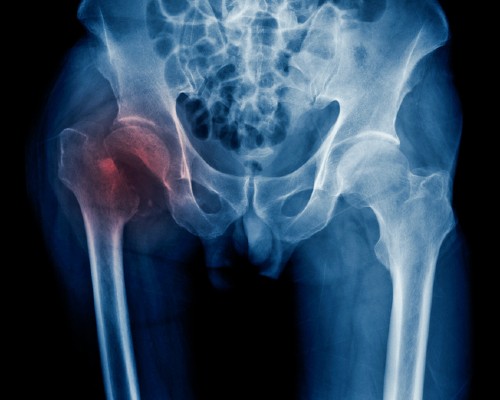The guidance was developed after the REDUCE study last year carried out by the University of Bristol, found that how well patients recover after a hip fracture varies enormously between NHS hospitals in England and Wales.
Every year more than 70,000 older adults are admitted to a UK hospital after a hip fracture, which can lead to decreased quality of life, increased mortality and emergency hospital readmission after discharge.
Significant findings from the study show that the way hospitals deliver patient care is linked to longer term patient recovery. The researchers identified that patients had a lower risk of dying in hospitals where hip fracture staff met regularly to discuss feedback from patients as a team. In addition, in hospitals where staff were able to get at least 90% of hip fracture patients out of bed the day after surgery, patients stayed in hospital on average two days less.
Described by one early adopter as 'a seriously comprehensive masterpiece', the toolkit addresses different aspects of the care pathway, providing guidance on training, clinical team planning, service specifications, quality improvement and patient discharge, making it easier for hospitals to improve the service they provide.
Jill Griffin, Head of Clinical Engagement at the ROS was core investigator on the project. She worked with Celia Gregson, Professor in Clinical Epidemiology and Orthogeriatrician in the Musculoskeletal Research Unit at the University of Bristol and chief investigator of the study, to develop the guidance which will now be hosted on the ROS website.
Jill Griffin, said: "The research findings have given us valuable information and shown us how we can work with healthcare providers and hospitals to improve patient recovery after a hip fracture.
"The study data has enabled us to make recommendations that we have used to build this toolkit for healthcare professionals and our aim is that it will dramatically improve the quality of care for everyone who suffers a hip fracture."
Professor Celia Gregson added: "The REDUCE study hip fracture toolkit is the product of a 3-year research programme. Our research has identified substantial variation in how hip fractures services are delivered across England and Wales. Such variation is not justified on clinical grounds, and this variation in clinical practice translates to differences in important patient outcomes, like time spent in hospital, risk of death, recovery of mobility, as well as how much hip fracture care costs the NHS.
"As a team we wanted to try and tackle this, by making it easier for (often very busy and over stretched services) to implement changes locally, to make hip fracture care more equitable across the country. Hence, we developed this toolkit. It provides practical, evidence-based guidance on different aspects of the complex care pathway for hip fracture patients, from the emergency department to hospital discharge. We hope that this new library of tools provides a useful resource to the hip fracture community, and we are interested to hear from services who use it to successfully improve their hip fracture care pathway."
Getting It Right First Time (GIRFT) is a national programme designed to improve the treatment and care of patients through in-depth review of services, benchmarking, and presenting a data-driven evidence base to support change.
Mr Bob Handley, Orthopaedic Trauma Surgery Clinical Lead from GIRFT, said: "The REDUCE study provides clear insights for frontline staff on what practices are associated with improvements to outcomes including length of stay for hip fracture, which will often be relevant to other non-ambulatory fragility fractures.
"We know that the potential benefits of adopting these practices could be significant, which is why we are recommending orthopaedic trauma services to consider the insights coming out of REDUCE to help improve length of stay. The study’s cost-benefit calculator will support trusts to do this, and we strongly encourage trusts to make use of it."
The REDUCE hip fracture service implementation toolkit is freely available to all healthcare professionals and service managers.
